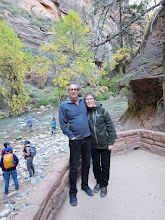Four articles in
particular blew me away.
Two articles
referenced climate change, one from the perspective of a rational explanation
of the science behind the assertions that climate change is real, and the
activities of the human race is behind the shift, and the second from the
viewpoint of real life people who live in Alaska and are experiencing the change in
climate first hand.
The initial
article details the evidence. Three consecutive years of a new record for
the highest average global temperature since records have been kept. Last
year's average was 1.69 degrees warmer than the 20th century average. No
natural cause explains the change. Human
emitted greenhouse gases form a steadily thickening blanket that traps hear at
the Earth’s surface. More than 9 out of
10 climate scientists agree that carbon emissions cause global warming. Its real, and it is dangerous.
From dwindling arctic ice to more intense weather to the reduction
of wildlife species with even more (one is six) in danger of extinction in the
next 80 years, the negative consequences of climate change will not go away
despite the efforts of the fossil fuel industry to cast doubt, and the current
administration’s head in the sand attitude.
With reference to the Alaskans already experiencing the effects,
it only takes a trip to the lower half of this huge state to spend time with
those who see the change first hand to know it is real. In “Racing the Thaw”, the reduction of the
permafrost is creating a frantic rush to save the artifacts now being revealed,
artifacts that had been frozen in the ground for hundreds, even thousands of
years. As only Nat Geo can, we read
about the Yupik people and their struggle to adapt to changes which are slowly,
inexorably, preventing them from continuing the tradition of their ancestors.
But, as is the thinking at Nat Geo, there are many ways to address
the issue. The advances in wind and
solar power technologies have resulted in clean energy becoming cheaper than
fossil fuel sources. It is now just the will to begin the switch to cleaner energy that stand in the way of
an eventual changeover from oil, natural gas and coal. Of course, it is a process, a process than
can take years, even decades, but the longer we delay making that concerted
effort to change, the more damage we do to our environment. Damage that may not be reversible if we wait
too long.
The third article is called Beyond Human. It describes man’s efforts to take evolution
into our own hands, through enhancement of our bodies. It is a fascinating depiction of how various
subsets of our species have evolved in specific ways to adapt to an
environmental challenge. A trait that
allows for high altitude breathing, and one that enables living in deserts by
modulating the excess energy produced when body temperature rises, demonstrate
that our species is always adapting.
Now, medical advances have provided over 20,000 people with implants
that have enabled them to not only hear or see as if they had the working
organs that we take for granted, but at times, provide a hearing or seeing
function that is an improvement over the standard abilities. Cyborgs among us!
Reading this article after the lead article about climate change,
expands one’s viewpoint to think that, in addition to the everyday changes that
we can make to counter the effects of climate change, perhaps there will be
evolutionary tweaks that the coming generations of humans will also use to
survive, and even thrive, on a planet that we have altered.
Finally, there was “Life After ISIS”, which detailed the horrific
crimes against humanity and the environment that have been perpetrated in Iran
and Syria. The sadness of lives lost and
families blown apart, in addition to the won ton disregard for culture, and for
the environment, is depicted in all too stark reality. Last week’s revelation of civilian deaths via
chemical weapons in Syria demonstrates that it is not just extreme fundamentalism
but governmental thirst for power that can lead to man’s cruelty against man. But again, within the destruction and
inhumanity, examples of hope are still to be found. Men and women striving to create some sense
of normalcy for their children within such carnage.
If you get a chance, and have the resources, pick up the April edition of National Geographic. While it may disturb you, it may also help you focus your understanding of what is truly important. Not who wins the next sports championship, or the next reality show contest, or any of the dozens of distractions that are being used to keep us from thinking about and discussing the real issues which will shape the future for the Earth as well as mankind.

No comments:
Post a Comment